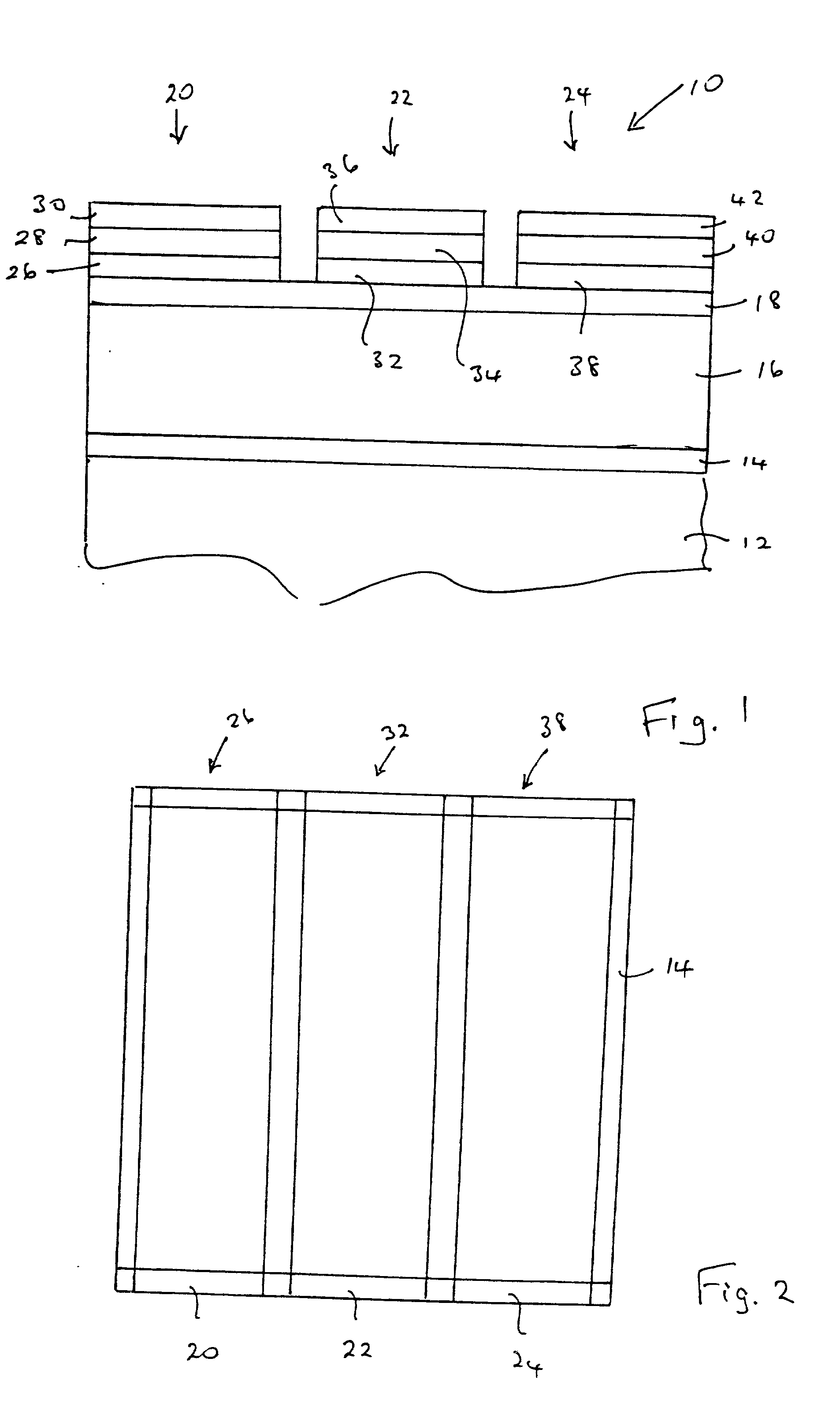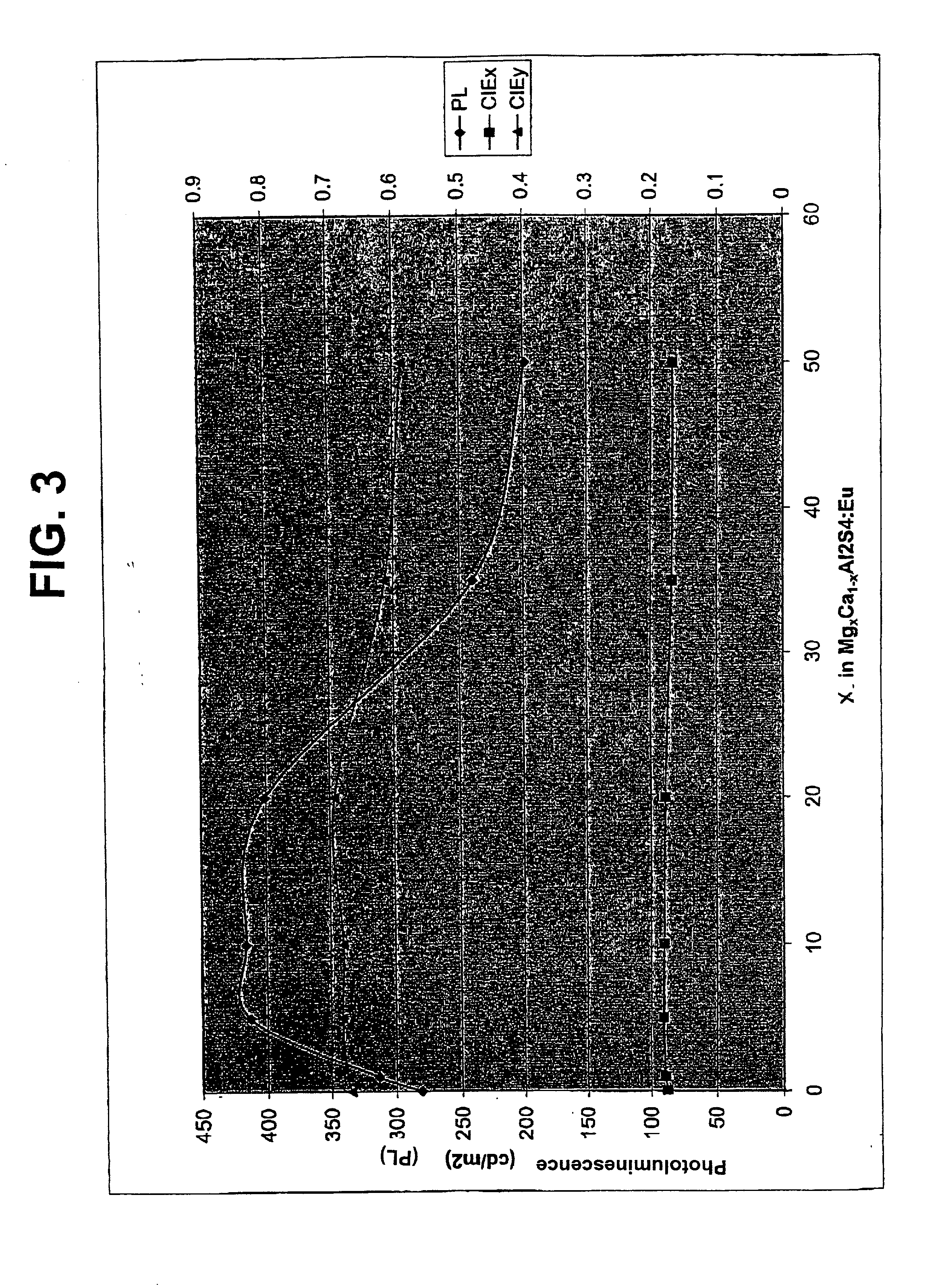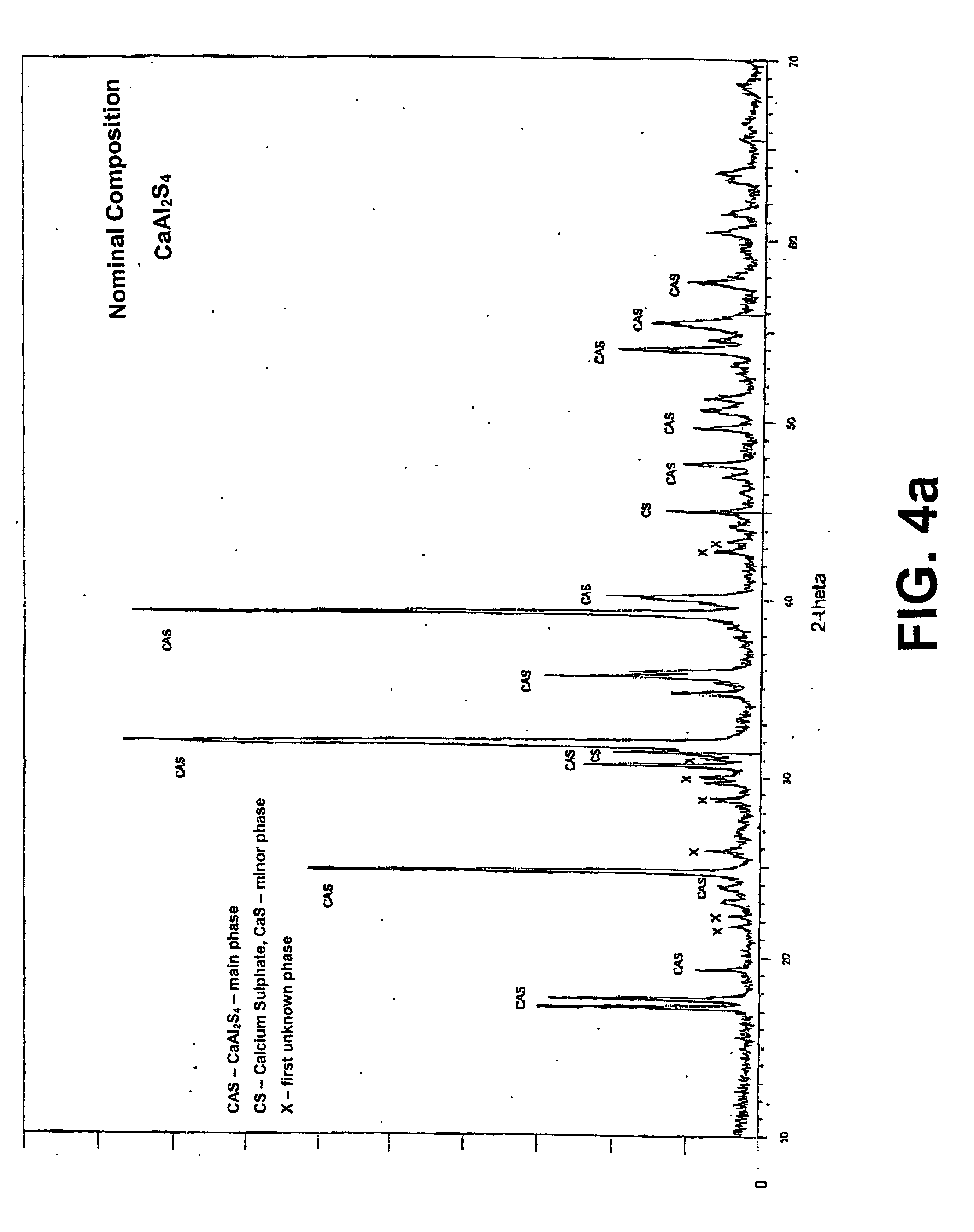Magnesium calcium thioaluminate phosphor
a technology phosphor, which is applied in the field of magnesium calcium thioaluminate phosphor, can solve the problems of low energy efficiency and correspondingly high power consumption of the display, and the phosphor is more difficult to deposit as a thin film for electroluminescent displays, and it is not possible to compensate for the lower deposition temperatur
- Summary
- Abstract
- Description
- Claims
- Application Information
AI Technical Summary
Problems solved by technology
Method used
Image
Examples
example ii
[0056] The phosphors prepared as in Example I were subjected to x-ray diffraction analysis. The X-ray diffraction patterns are shown in FIGS. 4a through 4h. In addition, the patterns are shown on a reduced scale with a common x-axis in FIG. 5.
[0057] The dominant diffraction pattern for each phosphor is that for calcium thioaluminate.
[0058] The diffraction patterns for the phosphors with x=0.00 i.e. no magnesium, and x=0.01 i.e. 1 atomic percent of magnesium, also show diffraction peaks for calcium sulphide, with less calcium sulfide in the latter sample (1 atomic percent magnesium) and a first unidentified crystal phase.
[0059] The diffraction pattern for the phosphor with x=0.05 does not show the peak for calcium sulphide, but does show the same unidentified crystal phase (first unidentified crystal phase) as the phosphor with x=0.01.
[0060] The diffraction pattern for the phosphor with x=0.10 does not show a peak for calcium sulfide. It does show the same unidentified first crystal ...
example iii
[0068] Several electroluminescent devices were constructed with magnesium calcium thioaluminate phosphor films. The magnesium content in the films corresponded to x=0.00, 0.10, 0.20, 0.35, 0.50, and 0.75 in the formula Mg.sub.xCa.sub.1-xAl.sub.2S.sub.4:Eu.
[0069] The substrate upon which each device was built consisted of alumina sheets measuring 5 centimeter by 5 centimeter, with a thickness of 0.1 centimeters. A gold patterned electrode was deposited on the alumina substrate, followed by a thick film dielectric structure, according to the methods described in U.S. patent application Ser. No. 09 / 540,288. A thin film dielectric consisting of barium titanate with a thickness of 100 to 200 nanometers was deposited on top of the thick film dielectric. The magnesium calcium thioaluminate phosphor film was deposited on top of the thin film dielectric film by electron beam evaporation using dual evaporation sources as described in U.S. patent application Ser. No. 09 / 747,315. The source mat...
example iv
[0074] Devices similar to those in Example III were constructed and tested. In all devices, the phosphor was formed from compositions of the formula Mg.sub.xCa.sub.1-xAl.sub.2S.sub.4:Eu with x=0.10. This composition closely corresponds to the single phase composition identified using x-ray diffraction measurements.
[0075] Phosphors were made with europium concentrations corresponding to 1.5 and to 3.5 atomic percent of the aluminum concentration. A control phosphor with no magnesium and 3.5 atomic percent europium was also prepared. In all cases the phosphor film was deposited at 200.degree. C.
[0076] The test results are shown in FIG. 8. The performance of all of the devices was quite similar, with the phosphor having magnesium and 1.5 atomic percent europium giving the highest luminance and the phosphor without magnesium giving the lowest luminance.
PUM
| Property | Measurement | Unit |
|---|---|---|
| thickness | aaaaa | aaaaa |
| thickness | aaaaa | aaaaa |
| temperature | aaaaa | aaaaa |
Abstract
Description
Claims
Application Information
 Login to View More
Login to View More - R&D
- Intellectual Property
- Life Sciences
- Materials
- Tech Scout
- Unparalleled Data Quality
- Higher Quality Content
- 60% Fewer Hallucinations
Browse by: Latest US Patents, China's latest patents, Technical Efficacy Thesaurus, Application Domain, Technology Topic, Popular Technical Reports.
© 2025 PatSnap. All rights reserved.Legal|Privacy policy|Modern Slavery Act Transparency Statement|Sitemap|About US| Contact US: help@patsnap.com



